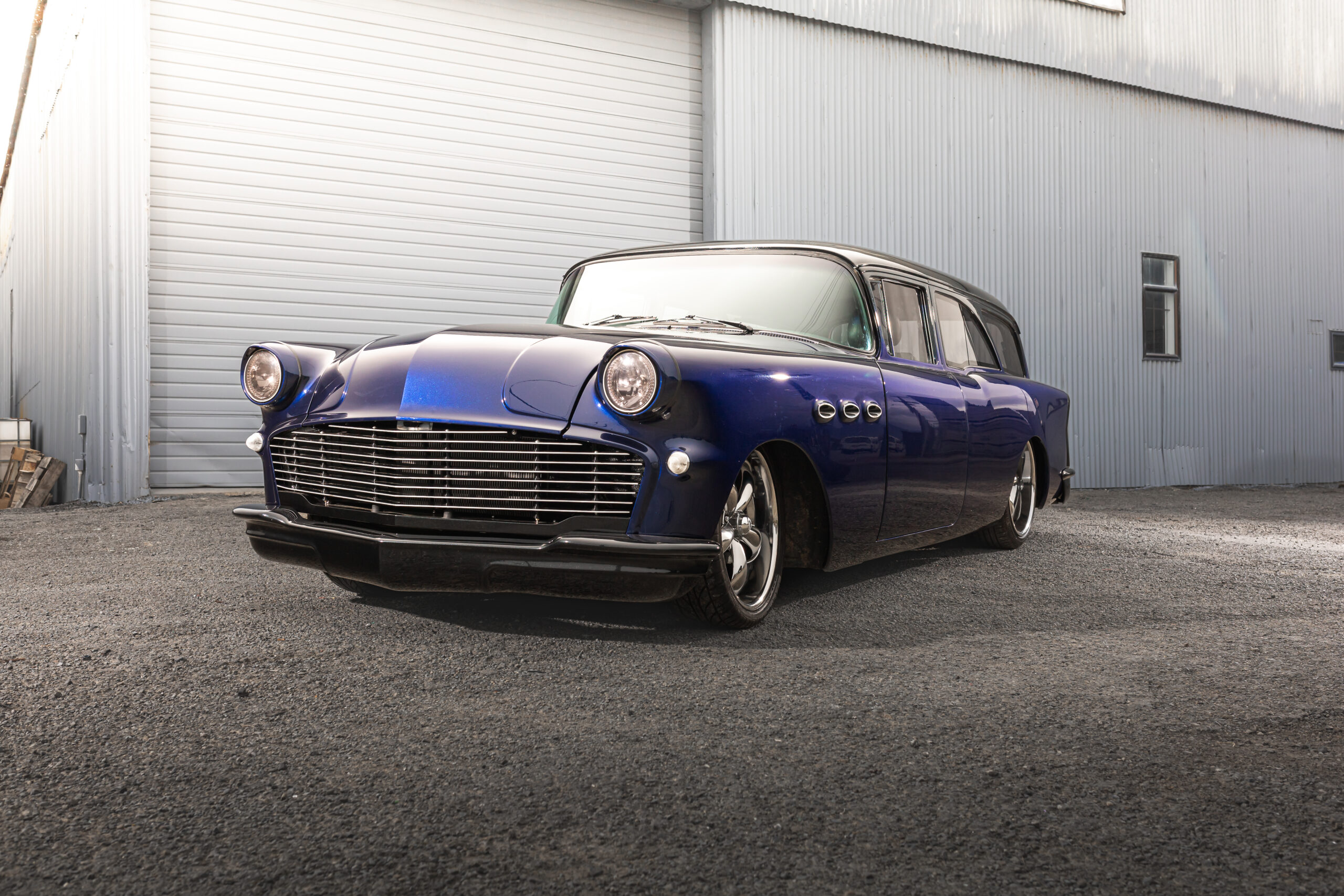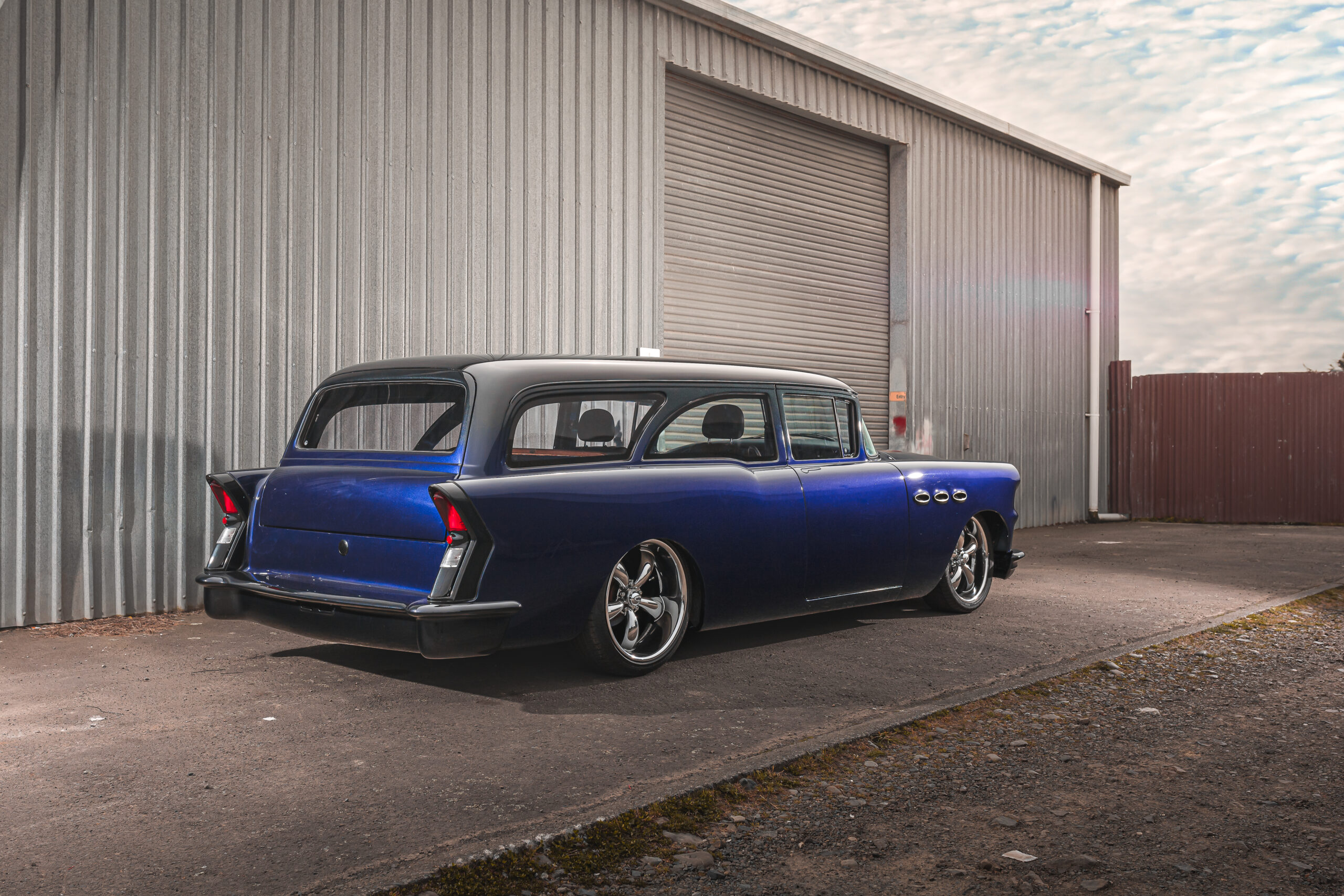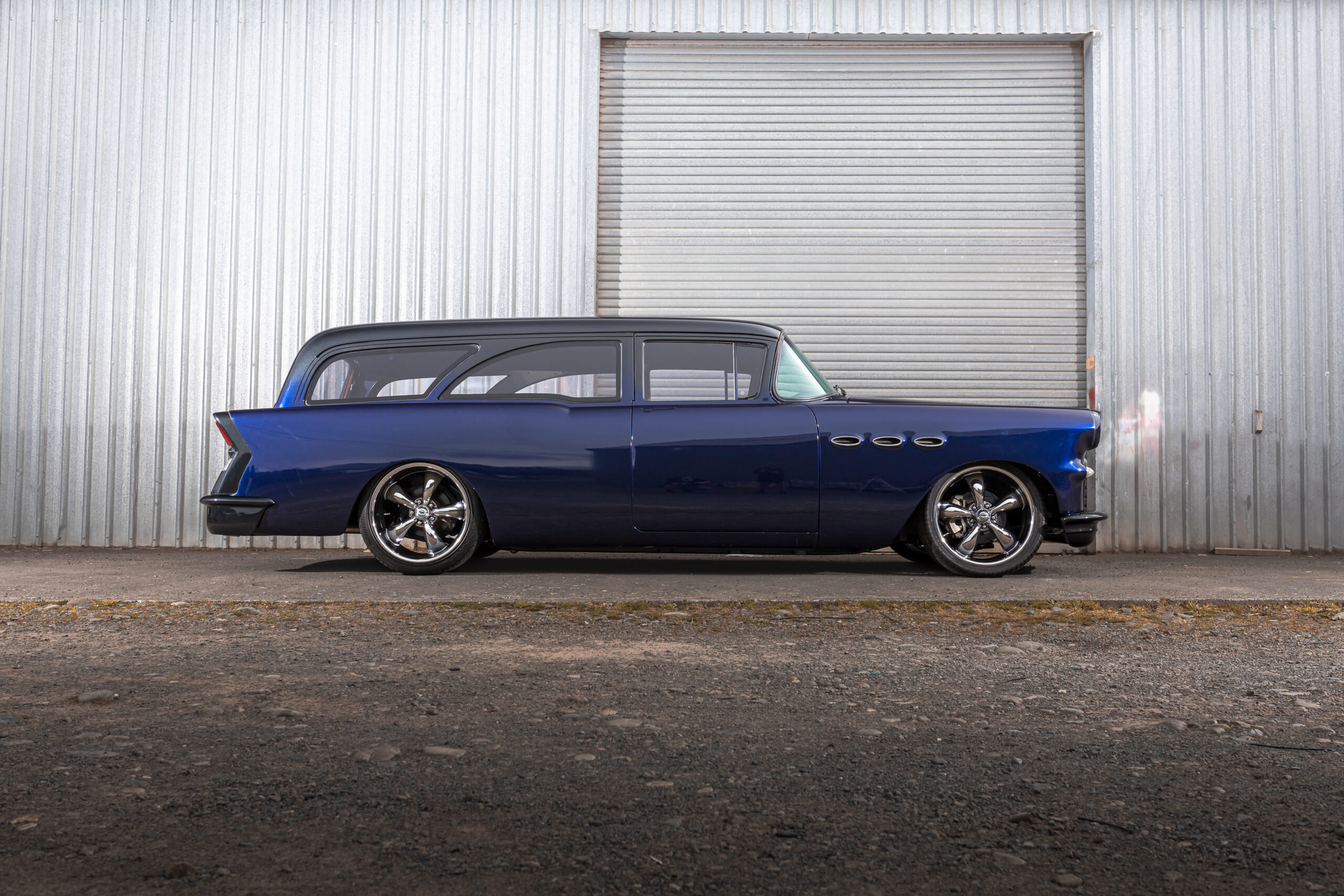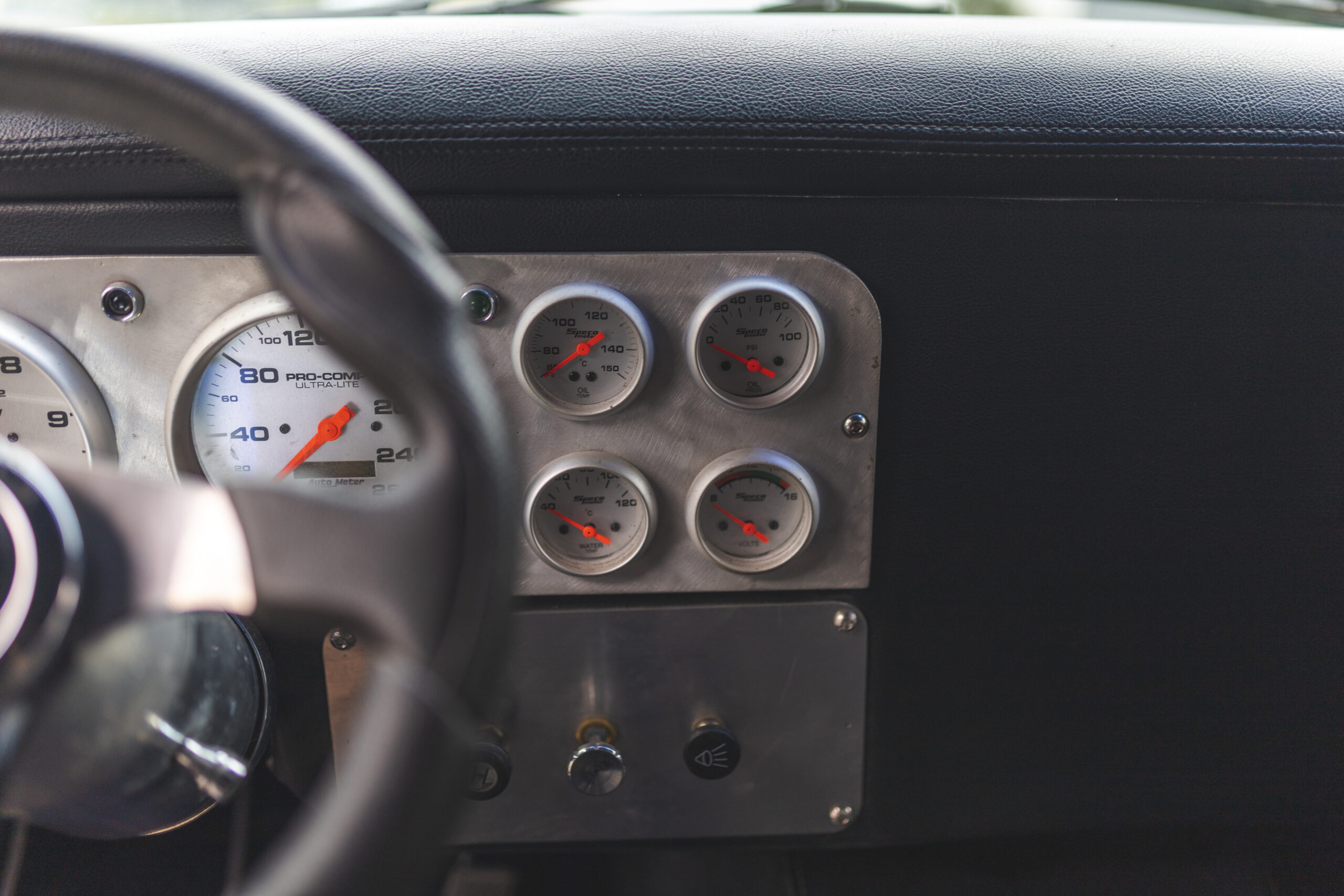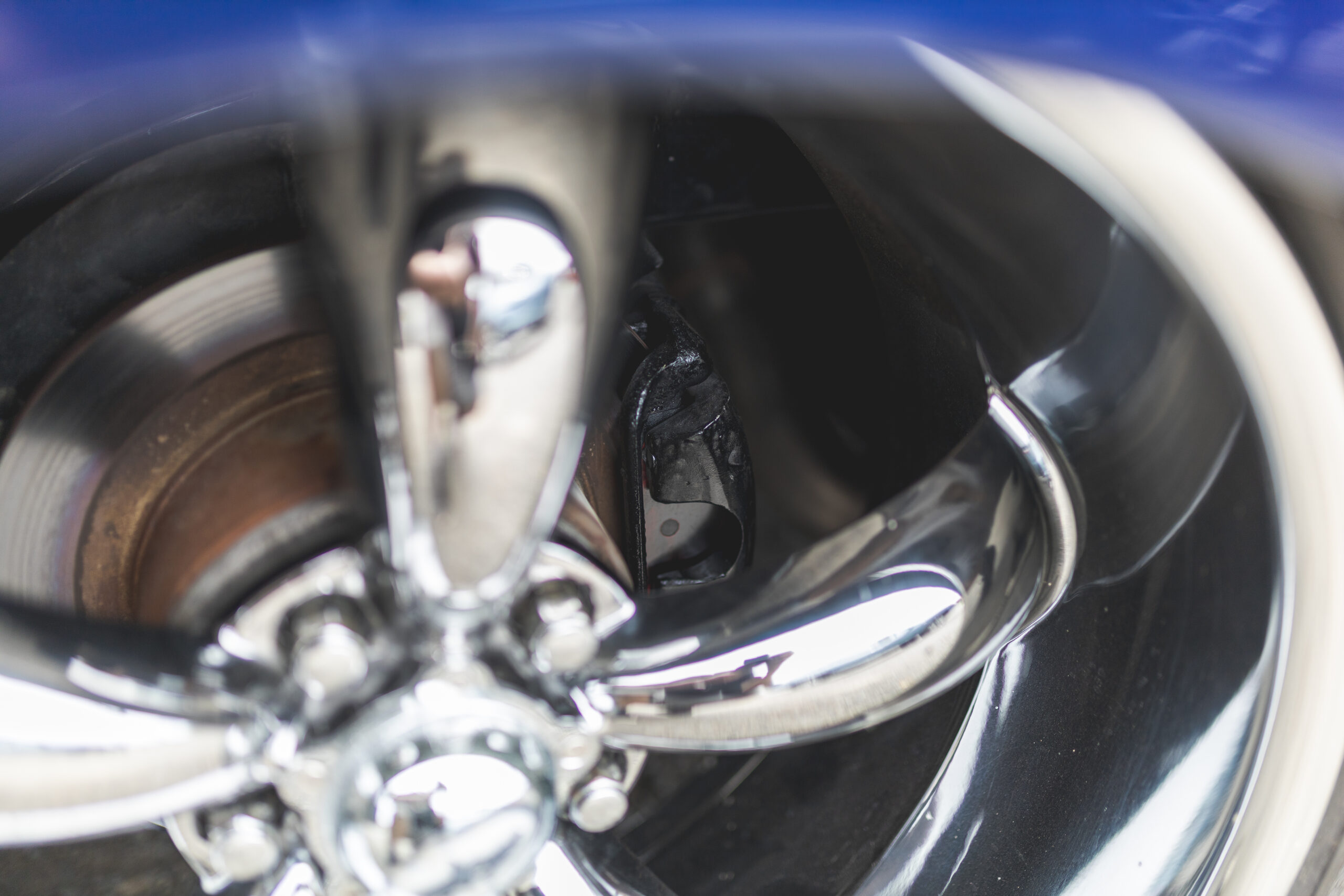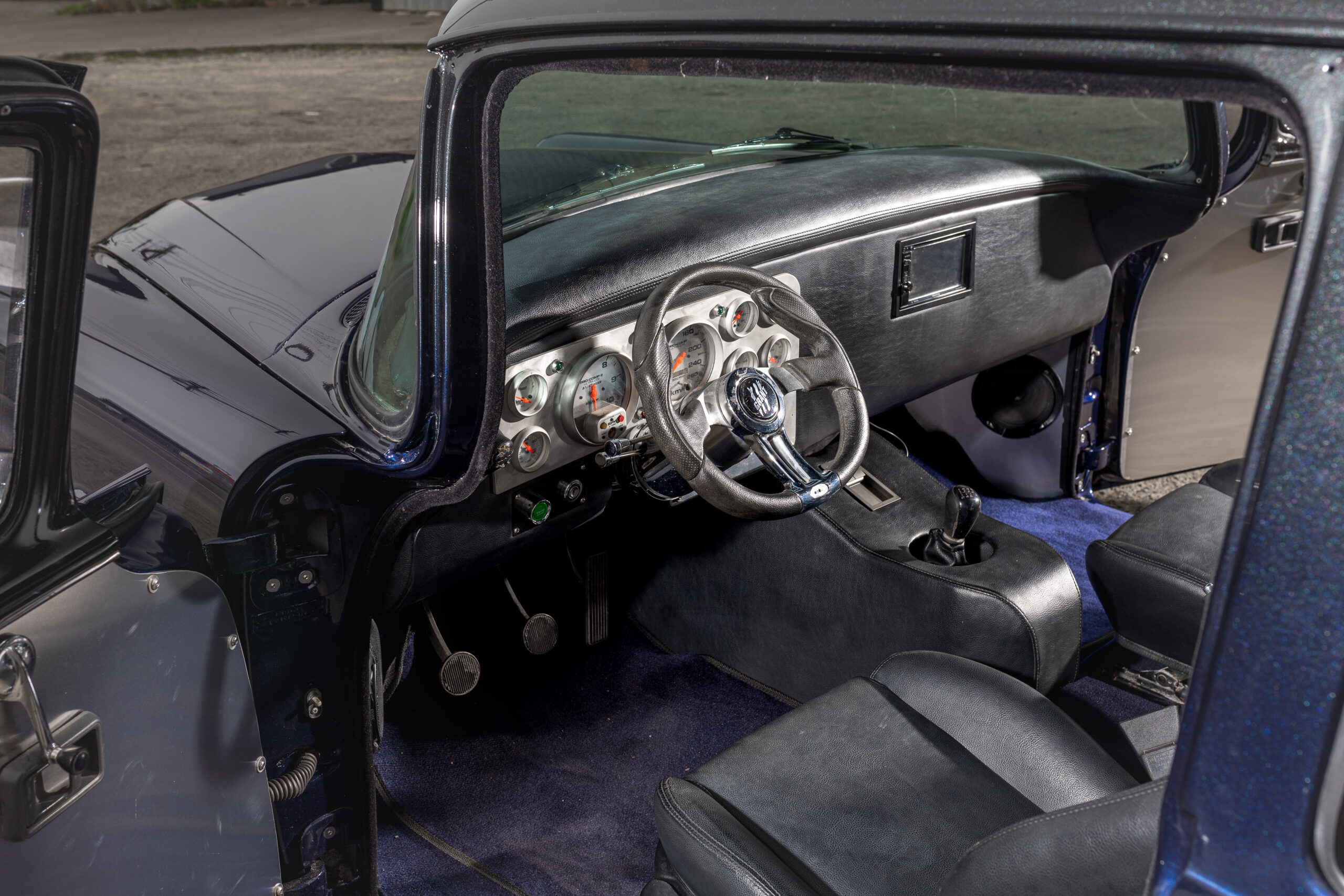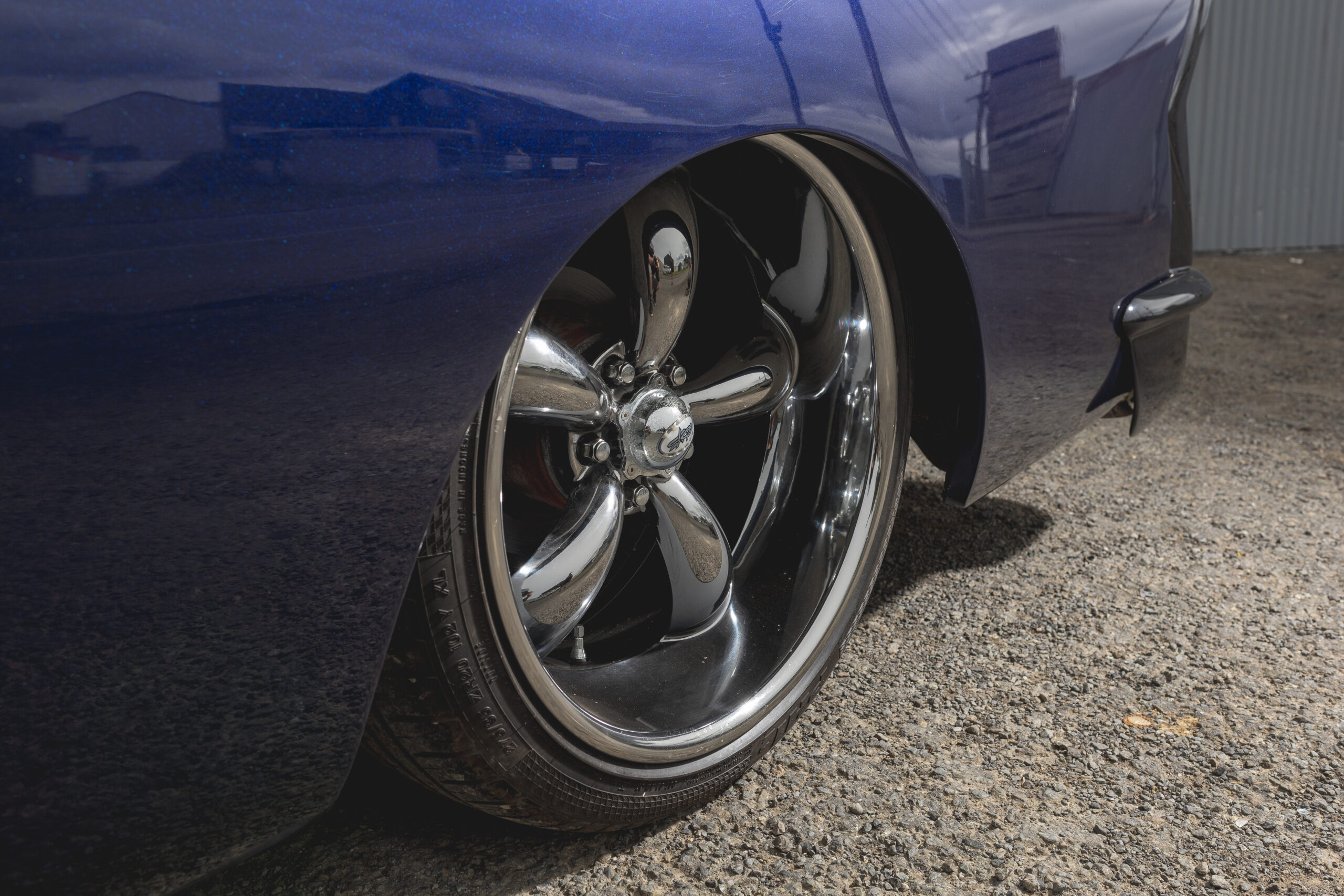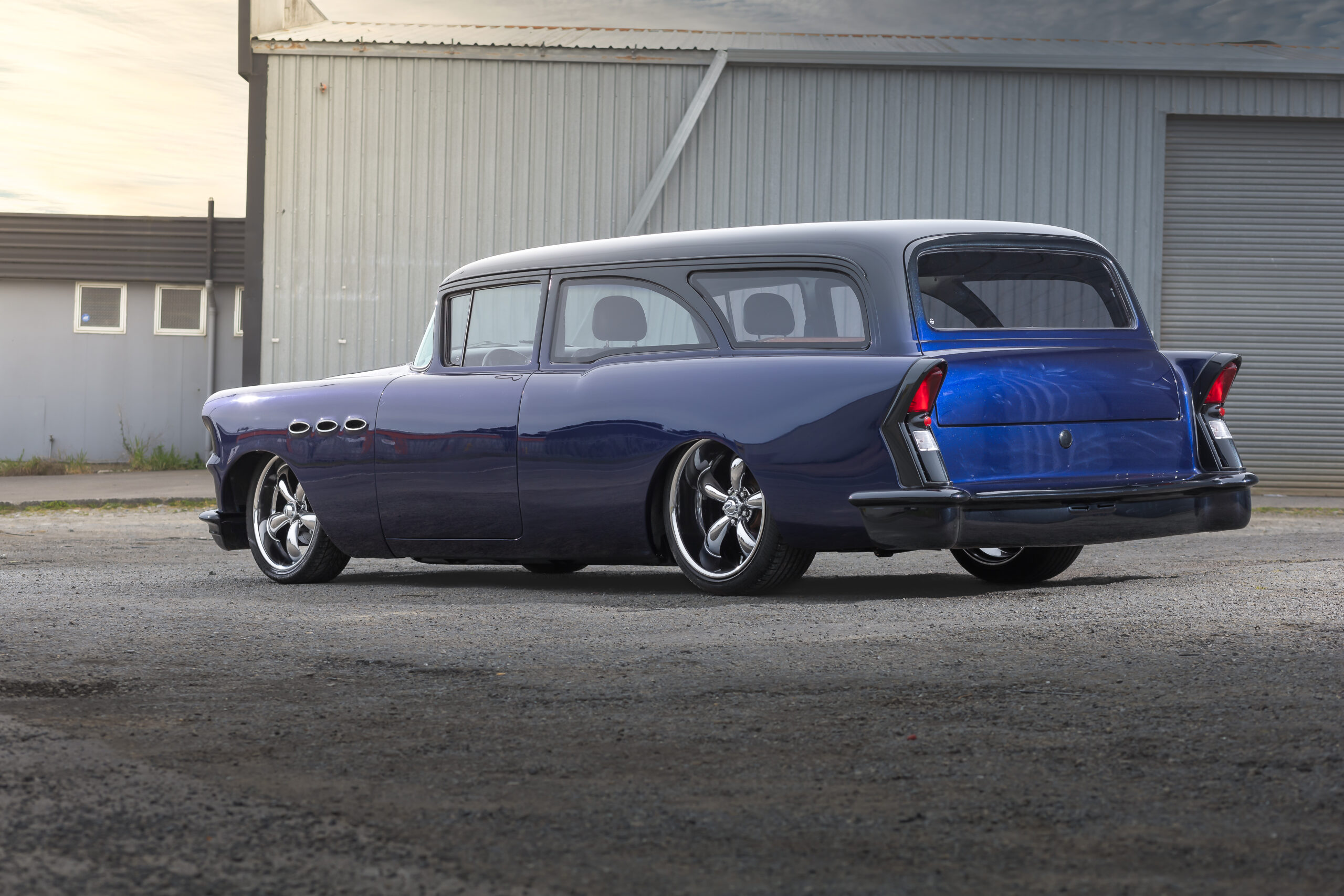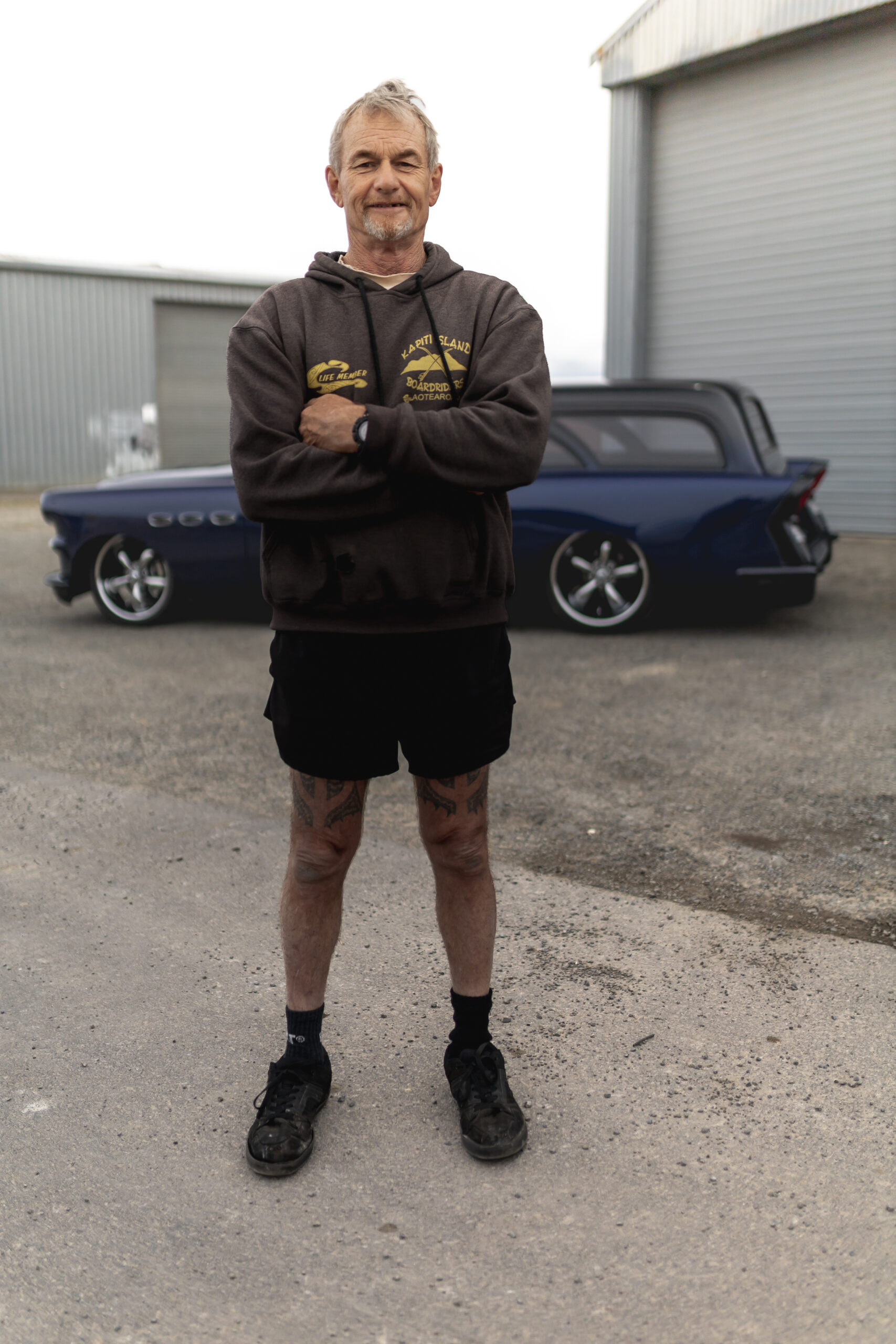Words: Todd Wylie Photos: Rixsta Sammons
Buicks from 1956 aren’t exactly thick on the ground here, let alone Buick wagons, and two-door wagons? Well, forget about it … Buick never made them. Yep, you read that right, what you’re looking at here, despite being obviously customised, never even rolled off the factory floor in stock form. The man behind the build is Ross Higgott, a Kiwi who spent many years in Aussie before heading back home to take life a bit easier. Besides a sun tan and the hint of an accent, the best thing he brought back home with him was the half-completed Buick, a car that he’s now owned for 10 years all up.
Rewinding back to when he first got his hands on it, Ross wasn’t specifically looking for a Buick, or necessarily a wagon, but he knew that he wanted to build something different to what everyone else had. A neighbour of his was an importer, regularly bringing cars back from the States, and so was given reasonably loose criteria to see what he came up with. When the ’56 Buick Special presented itself, Ross was sold on its potential and had the car shipped from the States to Queensland.
Having found a respectable car restoration business on the Gold Coast, he had them strip back the car and sandblast the chassis. While many a Kiwi (or Aussie) has been burned by cars needing unexpected rust-repair work, at least Ross had a rough idea of what he was in for, and that was having the floor pans and sills replaced. The work didn’t start off well when off-the-shelf floor pans turned out to be the wrong parts, but that only encouraged the shop to handcraft its own from scratch. Sadly, like many talented craftspeople, the owner was so focused on producing quality work that he took his eye off running the business, and, before long, the receivers came calling and the business closed for good. Ross recalls, “I got a call and I had a week to move my car out. I took it home and worked on it for a while before finding Guy, from Twin Towns Panel and Paint, where I decided to go on a new modified look.”
Part of the motivation for going the custom route was that, not long before all the drama unfolded with the panel shop, the engine rebuilder that had the car’s original engine and three-speed gearbox had done a runner, parts included! So now with no original running gear, and the car sitting in a shop that specialised in custom work, it was only a matter of time before imaginations and angle grinders started running wild. After a bit of discussion, it was decided to convert the car from four doors to two, making it into a variant that the factory had never offered. It would have been easy to keep the factory C-pillar shape, but both Ross and the shop wanted to make the conversion a bit more wild by creating a new flowing design. As if that wasn’t enough on its own, during the conversion, the B-, C-, and D-pillars were pulled in 15mm at the bottom to make the glass more vertical. This move had the added visual effect of making the rear guards appear more pumped than they actually are. Following this, they turned attention to the rear door/tailgate. Rather than keep the original equipment (OE) style, the shut line between the upper and lower tailgate was dropped down, making the opening one piece rather than two as it was previously.
With so much custom work going on, it wasn’t long before the team turned their attention to the front of the car. While the big chrome grille and dagmars are what give the Buicks their unique look, Ross took a big chance by ditching them in favour of a new custom grille. Getting the look right took no less than three attempts, but at last he nailed it. The clean look it offers makes the vehicle feel far more modern than it really is, which led to the next step of the process — picking the power plant to match.
With so much custom work going on, it wasn’t long before the team turned their attention to the front of the car. While the big chrome grille and dagmars are what give the Buicks their unique look, Ross took a big chance by ditching them in favour of a new custom grille. Getting the look right took no less than three attempts, but at last he nailed it. The clean look it offers makes the vehicle feel far more modern than it really is, which led to the next step of the process — picking the power plant to match.
Ross was away working at the time — two weeks on, two weeks off — so would try to get as much done as he could when back home. That included getting a full custom front clip added to the stock chassis rails. Converting the car to right-hand drive was discussed but eventually decided against and a left-hand-drive rack-and-pinion was fitted before the rebuilt engine was bolted in over the top.
Changing the front clip gave the option to add more modern suspension geometry, which came care of tubular A-arms and coilovers from Southern Chassis Works. The front brake assembly was also pinched off the now-engineless Commodore ute, but rather than mess up the new smooth firewall with an ugly booster, Ross had Ziggy’s Customs set up a custom under-dash booster and master cylinder combo.
The fabrication work continued under the rear end with a diff being sourced from a Camaro and attached via a custom four-link. With 35-spline axles and a 3.25:1 ratio inside, the set-up should be able to handle everything that Ross and the LS throw at it.
Not long after the 20×8- and 20×10-inch Coys wheels were fitted, Covid hit, and, rather than sit it out in Australia, Ross decided that it was time to move back home to the sunny Manawatu, loading the car into a container with the rest of his belongings. His son Martin was already here and able to help out with the remaining work that the car needed, such as the paintwork and interior trim. Ross tells us, “While I was waiting to return to New Zealand, Martin found a painter at Smash Palace in Palmerston North who could paint and finish a few details to finish it. I picked the new Ford Mustang Kona Blue, with a black fade from the roof with black tail lights and bumpers.” Blacking out what little was left of the chrome work was a big risk to take, but it’s a move that was clearly worthwhile.
Adding to the dark look is fresh glass with a built-in tint, and behind that is an interior retrimmed by Kerry’s Upholstery. The original rear seat was retained, while Holden Astra items were sourced for the front and retrimmed along with the custom dashboard. In contrast, the door skins were left as bare aluminium to match the gauge cluster. “There’s so much to do when you modify a car — some of the inner trim had to be remade, seat-belt bracket, electric windows were installed — it was keeping me busy,” says Ross of the fiddly bits.
Ten years and two countries after the build began, the car is just going through the finishing-touches process now. It’s been a hell of a journey, with some parts that Ross would prefer to forget, but, for the bulk of it, he’s had plenty of fun, and he’s certainly achieved the goal of building something unlike anything else on the road. Even if Buick had made a two-door wagon back in 1956, you can bet there still wouldn’t be any others that look like this!
_______________________________________________________________________________________________________
This article originally appeared in NZV8 issue 212





